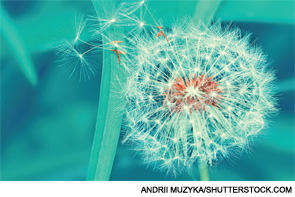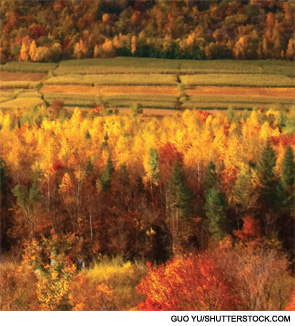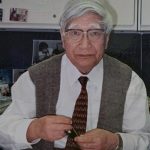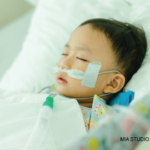
A new study links the spread of Kawasaki disease (KD) in the Far East and the Western U.S. to winds from farmland in northeast China. And the lead author says that rheumatologists studying other rheumatic diseases may want to view the wind as a potential factor in their spread.
The Basics
KD is an acute febrile illness of unknown etiology that primarily affects children younger than 5 years old.1
KD “is characterized by fever, rash, swelling of the hands and feet, irritation and redness of the whites of the eyes, swollen lymph glands in the neck, and irritation and inflammation of the mouth, lips, and throat. Serious complications include coronary artery dilatations and aneurysms. The standard treatment with intravenous immunoglobulin and aspirin substantially decreases the development of these coronary artery abnormalities.”
KD occurs worldwide, with the highest incidence in Japan. It most often affects boys and younger children.

The Study
The new study offers “a different way to look at these sorts of diseases,” says author Xavier Rodó, PhD, an ecologist and climate scientist at the Catalan Institute of Climate Sciences (IC3) in Barcelona, Spain.
Dr. Rodó’s study, “Tropospheric winds from northeastern China carry the etiologic agent of Kawasaki disease from its source to Japan,” was published online this spring by the Proceedings of the National Academy of Sciences.2 It reported that evidence indicates the “densely cultivated region of northeastern China acts as a source for the wind-borne agent” of KD.
“We’re not saying that the KD agent worldwide comes from this region, but that this is the case for Japan and the U.S.,” Dr. Rodó says.
KD is the leading cause of acquired heart disease in children worldwide and causes inflammation, conjunctivitis and other maladies. But little is known of the disease’s background. It primarily affects children younger than age 5 and was first reported in 1967 in Japan. The first reported cases outside of Japan were in Hawaii in 1976, according to the Centers for Disease Control and Prevention.1
Highlighting the importance to rheumatologists, a panel discussion at the 2013 ACR/ARHP Annual Meeting, titled, Kawasaki Disease: Putting Out the Fire, noted the need for early detection of the disease. One of the experts said it’s estimated that one in 1,600 adults in the U.S. will have had KD by 2030.3
Dr. Rodó notes that it’s important for rheumatologists and other physicians to realize the study does not identify KD’s etiologic agent. It also does not confirm whether the agent is a fungus, toxin or another kind of environmental particle.
The study did effectively rule out an infectious agent as the cause of KD, because of such a short incubation-to-hospital admission period, usually ranging from six hours to two days. In addition, a model fitted to the epidemiological data made it “absolutely impossible for an infection to spread among cities, even one with an incubation time of only two hours,” Dr. Rodó says. “If that were an infectious disease, it would be the fastest agent ever found,” he adds.
Unexpected Fungus Found
Although the paper did not identify the etiologic agent, it noted that when researchers took samples of the air, they unexpectedly found a variety of Candida fungus that represented 54% of all fungal strains. That result, which was consistent with a Candida animal model for KD, supports the concept of a windborne pathogen, the study argues.
The next step of the research is to try to confirm if Candida is the etiologic agent by taking more samples in different seasons. Then, more sophisticated analyses could be completed and treatments built from there, Dr. Rodó says.
“We are already working in that direction,” he says, adding in a statement to National Geographic, “It’s the most fascinating scientific problem I’ve been faced with.”4
Richard Quinn is a freelance writer in New Jersey.
References
- Kawasaki syndrome. Centers for Disease Control and Prevention. Department of Health and Human Services. http://www.cdc.gov/Kawasaki.
- Rodó X, Curcoll R, Robinson M, et al. Tropospheric winds from northeastern China carry the etiologic agent of Kawasaki disease from its source to Japan. PNAS. 2014 May 19 [Epub ahead of print]. http://www.pnas.org/content/early/2014/05/14/1400380111.
- Nierengarten MB. 2013 ACR/ARHP Annual Meeting: Diagnostic, treatment approaches evolve for Kawasaki disease. The Rheumatologist. February 2014. https://www.the-rheumatologist.org/details/article/5819541/2013_ACRARHP_Annual_Meeting_DiagnosticTreatment_Approaches_Evolve_for_Kawasaki_D.html.
- Yong E. Not exactly rocket science: The disease, my friend, is blowing in the wind. National Geographic. 2014 May 19. http://phenomena.nationalgeographic.com/2014/05/19/the-disease-my-friend-is-blowing-in-the-wind.


